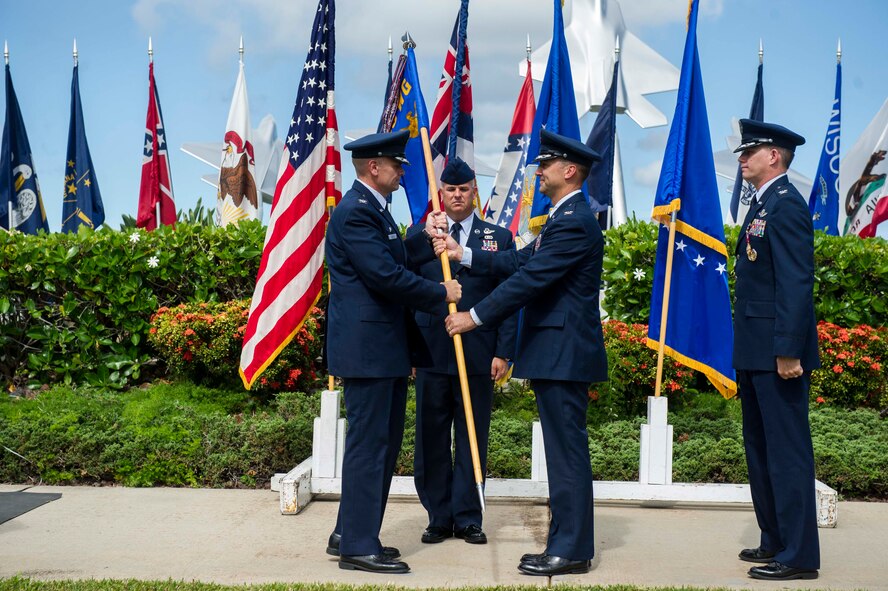Keyword:
Category:
Tag:
Sort By:

15th OG Change of Command
Col. Johnny Roscoe, 15th Wing commander (left) passes the 15th Operations Group guidon to incoming commander, Col. Michael Merritt, (middle) as former commander, Col. Dan Baldessari, (right) looks on during the 15 OG change of command ceremony at the Missing Man Formation on Joint Base Pearl Harbor-Hickam, Hawaii, June 21, 2013. The change of command ceremony is a military tradition deeply rooted in history and dates back to the times of the Roman Legion. In that period, military organizations developed flags that were unique to the organization with specialized colors and designs. When soldiers followed their leaders into battle, they kept sight of the flag. If the banner still waved after the conflict, it was a sign that their side had won. Having this position of importance, the flag was incorporated into change of command ceremonies. The organizational banner was exchanged in public for all to see that the one who holds the flag is the unchallenged leader of the armies. The modern day ceremony is principally symbolic, yet it still indicates to all the authority of the incoming commander in the finest military traditions. (U.S. Air Force Photo/Staff Sgt. Terri Paden)